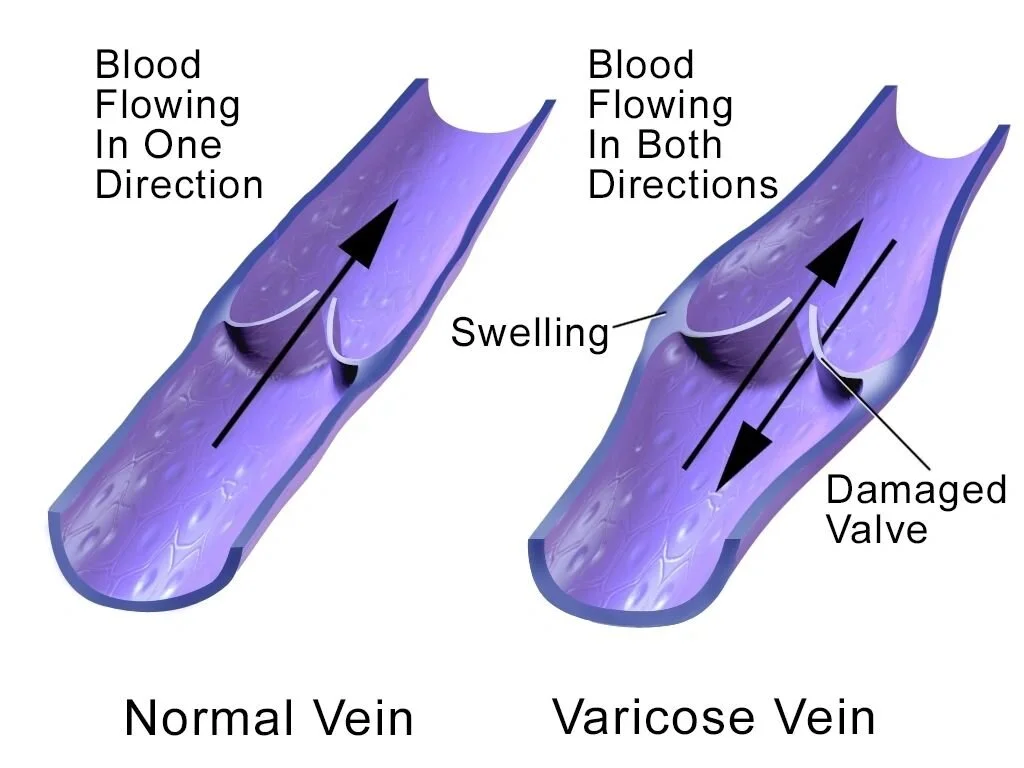What causes varicose veins?
Varicose veins are enlarged, swollen, and twisting veins, often appearing blue or dark purple. They occur when faulty valves in the veins allow blood to flow in the wrong direction or to pool. Here are some of the main causes of varicose veins:
1. Age: As you get older, your veins can lose elasticity, causing them to stretch. The valves in your veins may become weak, allowing blood that should be moving toward your heart to flow backward.
2. Pregnancy: Pregnancy increases the volume of blood in your body, but decreases the flow of blood from your legs to your pelvis. This circulatory change is designed to support the growing fetus, but it can produce an unfortunate side effect — enlarged veins in your legs.
3. Obesity: Being overweight or obese can put extra pressure on your veins, which can lead to varicose veins.
4. Family history: If other family members had varicose veins, there's a greater chance you will too.
5. Occupation: An occupation that involves a lot of standing, such as nursing or teaching, can increase your risk of developing varicose veins.
6. Gender: Women are more likely to develop the condition. Hormonal changes during pregnancy, pre-menstruation, or menopause may be a factor. Female hormones tend to relax vein walls. Taking hormone replacement therapy or birth control pills may increase your risk of varicose veins.
7. Lack of movement: Sitting or standing for long periods of time can cause blood to pool in the legs, increasing the pressure within the veins.
These are some of the most common causes of varicose veins. If you're concerned about varicose veins, it's important to consult a healthcare provider to discuss prevention strategies and treatment options.
